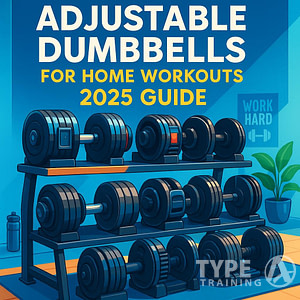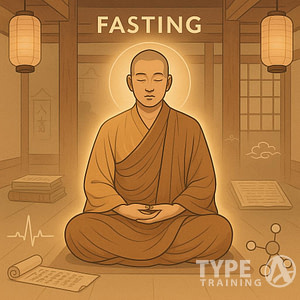Choosing the right cookware is essential for creating healthy and delicious meals. With growing awareness about the potential health risks associated with certain cookware materials, it’s important to know which options are safe for everyday use.
Non-toxic cookware, such as ceramics, stainless steel, and certain nonstick varieties, provides a safer alternative to traditional options that may leach harmful chemicals into your food.
As you explore the world of non-toxic cookware, consider the advantages and drawbacks of various materials.
Popular posts:
Ceramic cookware is celebrated for its smooth, non-stick surface and easy cleaning.
Stainless steel is favored for its durability and versatility, while some upgraded nonstick options are designed to be free from harmful PFAS chemicals.
By understanding these differences, you can make informed choices for your kitchen.
Key Takeaways
- Non-toxic cookware includes ceramic, stainless steel, and safe nonstick options.
- Materials like ceramics offer easy cleaning and safety from chemicals.
- Understanding your options ensures healthier cooking practices.
Understanding Toxic Cookware
When it comes to cookware, safety is often overlooked in favor of convenience. Certain materials in pots and pans may release harmful chemicals, risking your health.
Health Risks of Toxic Cookware
Toxic cookware can pose significant health risks.
Nonstick pans, particularly those with Teflon coatings, often contain chemicals like PFAS and PFOA.
These substances, known as “forever chemicals,” can break down during cooking, releasing toxic fumes. Overexposure may lead to flu-like symptoms, often referred to as “Teflon flu.”
Prolonged exposure to these chemicals is associated with severe health issues, including liver damage and developmental problems.
Cookware made with heavy metals such as lead and cadmium can also leach toxic substances into food.
Aluminum cookware, particularly when not coated properly, may release aluminum ions, potentially causing neurological issues.
Common Toxic Materials in Cookware
Nonstick coatings like PTFE and PFOA are prevalent in many cookware products for their ease of use.
When heated, these materials can degrade, releasing harmful substances into the air.
PTFE, commonly known as Teflon, is notorious for breaking down at high temperatures, and PFOA has been linked to various health concerns.
Heavy metals such as lead and cadmium, once commonly used in cookware, are now recognized for their toxicity.
Even low levels of exposure can be harmful, particularly to children and pregnant women.
Aluminum, another common cookware material, can pose risks if not properly anodized.
What to Know About Nonstick Cookware and PFAS
When you’re selecting nonstick cookware, it’s important to understand the potential health impacts of chemicals like PFAS. These are a group of synthetic substances often used to create a non-stick surface.
Why PFAS Matter:
- PFAS, or Per- and Polyfluoroalkyl Substances, are sometimes called “forever chemicals” due to their persistence in the environment.
- They can accumulate in your body over time and have been linked to health issues.
Identifying Safe Options:
Brands are now focusing on creating nonstick cookware without harmful PFAS.
A great example is Tramontina’s Enameled Frying Pan, which operates well without these chemicals.
Nonstick Surfaces:
Some nonstick surfaces contain alternative materials like ceramic, which do not use PFAS.
For instance, brands with a Thermolon ceramic coating are working towards minimizing or eliminating these substances.
Regulatory Changes:
Be aware of existing regulations, such as the California law coming into effect, which impacts claims related to PFAS-free cookware.
Online listings can no longer claim a product is free of one PFAS if it contains any other.
Nontoxic Cookware Options
Exploring various nontoxic cookware options can help ensure safe and healthy cooking experiences. This section highlights the key benefits and features of different cookware materials like ceramic, enameled cast iron, and stainless steel, as well as exploring alternatives like carbon steel and aluminum.
Ceramic Cookware Benefits
Ceramic cookware offers a naturally nonstick surface, making it easy to cook with less oil.
It is crafted without harmful chemicals such as PFAS or PTFE, ensuring food remains uncontaminated.
Ceramic nonstick pans, such as those offered by GreenPan, are particularly popular for this reason.
Ceramic cookware is versatile, suitable for various cooking styles from frying pans to stockpots.
The material also excels in heat distribution, which reduces burning and uneven cooking.
Moreover, the aesthetic appeal of ceramic cookware adds a stylish touch to any kitchen.
It’s durable and can withstand daily use, but does require careful handling to avoid chipping.
| Product Image | Product Name / Primary Rating / Price | Primary Button |
|---|---|---|
Enameled Cast Iron Features
Enameled cast iron provides the benefits of traditional cast iron without the need for seasoning.
The enamel coating offers a nonstick experience and is resistant to rust.
This feature makes it a favorite for those looking to maintain low-maintenance cookware like a classic dutch oven.
The robust nature of enameled cast iron ensures longevity, allowing you to use it for slow cooking and as a reliable sauté pan.
It also handles high temperatures well, making it perfect for oven use.
While it is heavier than other materials, this weight contributes to its excellent heat retention.
Enameled cast iron is often available in various colors, adding an attractive yet functional piece to your kitchen.
Stainless Steel Cookware Advantages
Stainless steel cookware is praised for its durability and nonreactive nature.
Unlike nonstick options, it doesn’t have a coating that can wear away.
Stainless steel pans are safe for all types of cooking, including acidic dishes that might affect other materials.
High-quality stainless steel cookware, like Caraway Cookware, offers reliable performance.
| Product Image | Product Name / Primary Rating / Price | Primary Button |
|---|---|---|
|
||
|
||
This type of cookware often features a layered construction that includes aluminum or copper cores, enhancing heat conductivity.
Stainless steel is easy to clean and dishwasher-safe, providing convenience without sacrificing quality.
It’s also compatible with all stovetops, including induction, and its sleek appearance complements modern kitchen aesthetics.
Why Choose Cast Iron
Cast iron cookware, including the popular cast iron skillet, is beloved for its unparalleled heat retention.
This attribute makes it ideal for searing meats and baking.
Although it requires seasoning to maintain its nonstick capabilities, properly treated cast iron lasts for generations.
A major selling point is its ability to deliver rich flavors as it develops a natural patina over time.
Cast iron is versatile, moving seamlessly from stovetop to oven.
While heavy, it proves to be incredibly durable.
| Product Image | Product Name / Primary Rating / Price | Primary Button |
|---|---|---|
|
||
One consideration is avoiding cooking acidic foods for prolonged periods, as they can affect the patina.
Despite this, many home cooks favor cast iron for its reliability and performance.
Alternative Nontoxic Materials
Exploring alternative nontoxic cookware materials expands your options beyond traditional choices.
Carbon steel cookware, similar to cast iron, offers impressive heat retention and becomes naturally nonstick with proper seasoning. This makes it an efficient choice for those who enjoy using high heat.
Porcelain enamel and glass cookware provide non-toxic options without the need for additional coatings.
Glass cookware, in particular, is useful for baking due to its transparency, while porcelain enamel offers visual appeal and even heat distribution.
Although alternatives like aluminum cookware are lighter, ensuring they are anodized or coated with safe materials prevents potential health concerns.
Each material brings unique benefits that cater to various cooking needs and preferences.
Evaluating Cookware Performance
When considering nontoxic cookware, focus on how well it distributes and retains heat, its durability over time, and how easy it is to maintain.
Heat Distribution and Retention
The ability of cookware to distribute and retain heat efficiently is vital for achieving even cooking.
Cast iron is known for its excellent heat retention, making it ideal for browning and slow cooking. It may require preheating for optimal performance.
Stainless steel also offers good heat retention and even distribution. Look for options with a layered core for enhanced performance.
Nonstick cookware, especially those with a high-quality nonstick coating, often heats quickly and evenly, helping prevent food from sticking.
This type of cookware is often suitable even for delicate foods, like eggs or fish, needing precise temperature control without burning or sticking.
Durability and Longevity
Cookware durability is crucial for long-term use.
Cast iron is often praised for its durability. Properly maintained, it can last generations. This cookware is highly resistant to scratches and damage from utensils.
Stainless steel is another robust option, known for its resistance to warping, rust, and stains, adding to its longevity.
Nonstick coatings can vary in their lifespan.
High-quality coatings withstand frequent use and cleaning but may eventually wear down, so it’s essential to use non-abrasive utensils and cleaning methods.
Consider nontoxic nonstick cookware that uses ceramic coatings for better durability without harmful chemicals. Choices like these offer a balance between nonstick ease and longevity.
Maintenance and Cleanability
Ease of cleaning is a significant factor in choosing cookware.
Nonstick cookware often provides the benefit of being easy to clean, often requiring just a simple wipe between uses.
Their smooth surfaces minimize food residue, making it ideal for quick cleaning.
Cast iron requires specific care, such as regular seasoning, to maintain its natural non-stick surface.
Despite the upkeep, many appreciate cast iron’s durability and versatility once seasoned.
Stainless steel can handle dishwasher cleaning and aggressive scrubbing without risk of damage, though it may require soaking for stuck-on food.
Choose your cookware based on your cleaning preferences and time available for maintenance. Each material offers unique benefits fitting different cooking styles and priorities.
Safety Guidelines and Usage Tips
When using nontoxic cookware, it’s crucial to maintain proper care and avoid contamination.
Understanding how different materials like ceramic and stainless steel interact with cooking processes can greatly enhance the lifespan of your pots and pans.
Following these guidelines will keep your kitchen environment safe and your food healthy.
Proper Care for Nontoxic Cookware
To maximize the durability and effectiveness of your nontoxic cookware, proper care begins with understanding material-specific requirements.
For example, ceramic cookware requires gentle cleaning with non-abrasive sponges to avoid damaging the surface.
Stainless steel can handle more robust scrubbing but benefits from regular polishing to maintain its shine.
Nonstick cookware, especially those containing PTFE, should not be used at high temperatures as they can release fumes.
Keep the stove below 390°F to ensure safety.
Using wooden or silicone utensils prevents scratches on nonstick surfaces.
For storage, stacking should be avoided unless separated by a soft barrier to prevent scratches.
Regular inspection for signs of wear, such as chips or cracks, ensures continued performance and safety.
Proper drying before stacking reduces moisture build-up, preventing rust or mold on materials like cast iron.
Avoiding Contamination and Wear
Avoiding contamination starts with selecting cookware free from harmful chemicals like PFOA and PFOS.
Always consult the manufacturer’s guidelines to confirm the absence of such compounds in your purchases.
Limiting the use of metal utensils reduces the risk of contaminating food through utensil residue.
To prevent wear and tear, avoid cooking sprays which can leave residues on nonstick surfaces that degrade over time.
Preheat cookware gradually instead of using a high flame to ensure even heat distribution without stressing material bonds.
For glass cookware, such as from Anchor Hockings, handling with care minimizes the risk of fractures.
Regularly checking for discoloration or unusual odors can alert you to potential contamination issues.
Adjust cleaning methods to address these concerns promptly, preserving the integrity of your cookware.
Safety Guidelines and Usage Tips
Proper handling and care extend the lifespan of your nontoxic cookware while ensuring they remain safe and effective.
Following key safety practices helps to avoid contamination and damage, particularly for materials like nonstick coatings which involve PFOS and PTFE.
Proper Care for Nontoxic Cookware
To maintain the integrity of your nontoxic cookware, start by using non-abrasive utensils such as silicone, wood, or coated utensils that do not scratch surfaces.
For cookware with nonstick coatings, avoid metal tools that may harm the layer.
Hand wash your pans with mild detergents and warm water, as dishwashers could degrade certain coatings.
Dry completely to prevent rust or discoloration, especially with stainless steel and cast iron.
Store your cookware properly by placing soft cloths or protectors between stacked pieces, which can prevent surface damage.
Periodic seasoning for cast iron or carbon steel maintains their nonstick characteristics and prevents rust.
Being mindful of the recommended temperature limits when cooking helps keep your cookware from warping or releasing fumes, preserving their nonstick properties and lifespan.
Avoiding Contamination and Wear
Preventing contamination ensures your cookware remains healthy and safe for food preparation.
Rinse new cookware thoroughly to remove manufacturing residues.
Avoid cooking sprays which build up a sticky residue over time, opting instead for a small amount of oil or butter.
Watch the heat setting; overheating can cause nonstick coatings made with PTFE to degrade.
For ceramic and glass cookware, cool them gradually to prevent cracking or shattering due to thermal shock.
Stay away from using abrasive pads or harsh cleansers that could wear down surfaces.
This helps maintain their smooth, non-reactive surfaces that prevent food from sticking and reacting.
These measures protect the integrity of your cookware materials and ensure safe meal preparation.
6 Best Nontoxic Cookware
1. Caraway Cookware Set
With its nonstick ceramic coating, Caraway offers a sleek design in vibrant colors.
This set includes a 10.5-inch frying pan, a 3-quart saucepan, and a 6.5-quart Dutch oven.
The ceramic coating ensures easy cleaning and safe cooking without harmful chemicals. More details can be found on Let’s Go green.
2. Great Jones Cookware
Great Jones uses a nonstick ceramic coating free from Teflon.
Their product range includes pots, pans, and bakeware, known for their modern design.
These high-quality pieces come at a price range of $40-$200.
3. Nuwave Ceramic Nonstick Cookware
Introducing the Nuwave Healthy Duralon Blue Ceramic Nonstick Cookware Set, featuring a diamond-infused scratch-resistant surface, PFAS-free construction for healthier cooking, and the convenience of being both dishwasher and oven safe.
4. GreenPan
This brand is well-known for its Thermolon ceramic nonstick technology, allowing for superb heat conduction.
Free of PFAS, PFOA, lead, and cadmium, GreenPan is a sustainable choice providing versatile cookware options.
5. Made In
Made In offers non-toxic stainless steel cookware that combines durability with a minimalistic design.
Best Overall: Caraway Cookware Set
The Caraway Cookware Set is renowned for its nonstick ceramic coating and stylish design.
It’s a popular choice among those seeking nontoxic cookware, as it is free from harmful chemicals like PFAS, PFOA, and PTFE. This ensures a safer cooking experience without the risk of releasing toxic substances.
This set includes seven essential pieces: a 10.5-inch frying pan, a 3-quart saucepan, a 4.5-quart sauté pan, a 6.5-quart Dutch oven, and three matching lids.
Each piece features a sleek, modern aesthetic with several color options to complement your kitchen decor. The cookware not only performs well but also looks great.
Key Features:
- Nonstick Ceramic Coating: Makes cooking and cleaning easy, reducing the need for oils and fats.
- Nontoxic: Crafted without harmful chemicals, providing peace of mind when preparing meals.
- Versatile Set: Offers a comprehensive range of cookware for diverse culinary needs.
The well-balanced handles and sturdy construction enhance user confidence during cooking tasks.
Additionally, each piece is designed to be oven-safe up to 550°F, offering the flexibility to switch from stovetop to oven without hassle.
The Caraway Cookware Set is ideal for those who prioritize health, safety, and style in their kitchen.
Most Versatile: 10.5″ Always Pan 2.0
The 10.5″ Always Pan 2.0 stands out as a multifunctional superstar in your kitchen.
It’s designed to replace up to ten different traditional cookware pieces, including a frying pan, steamer, and skillet. This versatility makes it perfect for anyone who values space-saving solutions without sacrificing functionality.
Crafted with nonstick, toxin-free ceramic material, this pan ensures effortless cooking and cleaning.
The coating is free from PFOA, PTFE, and other harmful chemicals typically associated with nonstick cookware. This makes it a healthier option for your culinary adventures.
The design includes a nesting spatula and built-in spoon rest, adding convenience to its numerous functions.
Its ability to perform tasks like sautéing, steaming, and frying makes it a must-have for any kitchen.
Plus, the pan’s lightweight construction makes handling it easy and comfortable.
Key Features:
- Multifunctional Use: Fry, steam, sauté, and more.
- Nonstick Surface: Ceramic coating free from harmful chemicals.
- Space-Saving Design: Combines 10 cookware functions in one.
- Built-In Spoon Rest: Simplifies cooking and reduces mess.
With its combination of features and capabilities, the Always Pan 2.0 is a practical choice for anyone seeking versatile and safer cookware options.
The attention to both functionality and health-conscious design makes it a notable contender in modern kitchens.
Best Set: GreenPan Valencia Pro 11-Piece Cookware Set
When looking for a non-toxic cookware set, the GreenPan Valencia Pro is an excellent choice.
This set stands out with its ceramic nonstick coating, which is free from PFAS, PFOA, lead, and cadmium. This ensures a safer cooking experience without releasing harmful chemicals.
The 11-piece set includes a range of cookware items such as frying pans, saucepans, and lids.
All pieces are designed for durability and versatility. These pans are also suitable for use with induction cooktops, broadening their usability in different kitchen settings.
Many users appreciate the convenience of the Valencia Pro set’s dishwasher-safe feature, making clean-up straightforward.
Additionally, the set is oven safe up to a certain temperature, allowing you to transition from stovetop to oven seamlessly.
The nonstick performance of this cookware is often highlighted in reviews.
Cooking with minimal oil becomes a reality, maintaining the non-stick promise effectively.
You’ll find that the ceramic finish allows for easy release of food, making cooking and cleaning more efficient.
The GreenPan Valencia Pro is not only functional but also stylish, with its sleek design. This makes it an attractive addition to any kitchen.
If you’re in the market for a reliable, non-toxic cookware set, the GreenPan Valencia Pro offers a combination of safety, performance, and aesthetics.
Best Set: GreenPan Valencia Pro 11-Piece Cookware Set
The GreenPan Valencia Pro 11-Piece Cookware Set stands out as an excellent choice for those seeking nontoxic options. These sleek, gray pieces feature a durable ceramic nonstick coating that is free of potentially harmful substances like PFAS, PFOA, and PTFE. This ensures peace of mind when cooking with these pans, as you won’t have to worry about unwanted chemicals leaching into your food.
This set includes an 8-inch, 9.5-inch, and 11-inch frying pan, along with a 2-quart and 3-quart saucepan with lids. It also features a 3-quart sauté pan with a lid, providing various options for your culinary needs. This variety enables you to prepare anything from quick stir-fries to slow-simmering sauces without needing other cookware.
Performance-wise, the pans are known for their heat distribution and retention. You can use them on all stovetops, including induction, and they are oven safe. Cleaning is hassle-free, as the surface allows most food residues to wipe away easily.
Your investment in this set not only promises functionality but also style. Its modern design can complement any kitchen decor, making it a functional yet aesthetically pleasing choice. For more details, check out the GreenPan Valencia Pro Cookware Set.
Best Stainless Steel: All-Clad D3 Cookware Set
The All-Clad D3 Cookware Set is a popular choice for those prioritizing nontoxic kitchen tools. Made from stainless steel, this set ensures durability and even heat distribution, attributes valued by professional chefs and home cooks.
This set includes essential pieces to cover most cooking needs:
- 10-inch frying pan
- 3-quart saucepan
- 8-quart stockpot with lids
These pieces cater to both beginner and advanced cooks looking for versatile options.
Stainless steel is celebrated for its resistance to rust and corrosion. Beyond that, it is free of PFOA, PFOS, and other harmful substances commonly found in nonstick cookware. This makes it a safer choice for those conscious of chemical exposure through cooking.
Handles in the All-Clad D3 set are designed for comfort and stability, allowing you to maneuver hot pans safely. The set is oven-safe up to 600 degrees Fahrenheit, providing versatility in cooking methods.
Many appreciate the convenience of this cookware’s design. The All-Clad D3 set features interchangeable lids and polished exteriors, adding aesthetic appeal while simplifying storage. It’s suitable for use on all stovetops, including induction.
Whether you’re searing meat or simmering sauces, the All-Clad D3 Cookware Set offers reliable performance. Consider this a long-term investment in a nontoxic and effective cooking experience.
Frequently Asked Questions
When selecting non-toxic cookware, you need to consider materials, brands, and safety features. You want to ensure that your cookware is free from harmful chemicals while providing value and longevity.
What are the safest cookware materials for health?
Stainless steel, cast iron, and carbon steel are excellent choices. These materials are durable and free from harmful chemicals. Cast iron offers great heat retention, while stainless steel is versatile and easy to clean.
Which non-toxic cookware brands offer the best value for money?
Brands like Caraway and Xtrema are known for their quality and safety. Caraway offers ceramic-coated non-stick options, whereas Xtrema specializes in ceramic. Both provide excellent durability and performance.
How do I choose a non-toxic non-stick pan?
Look for PFAS and PFOA-free coatings. Ceramic non-stick pans are a popular choice for being toxin-free while providing a smooth cooking surface. Ensure the pan is oven-safe and suitable for your cooking style.
What should I look for when buying a non-toxic cookware set?
Check for certifications and labels indicating the absence of toxic substances. Evaluate the set’s variety to ensure it meets your cooking needs. Warranty and brand reputation are also important factors in your decision.
Are there any health risks associated with ceramic non-toxic cookware?
Ceramic cookware is generally considered safe. Ensure that the ceramic is free from lead and cadmium, as these can leach into food. Proper use and maintenance can help preserve its non-toxic properties.
How can I identify cookware that is free from PFOA and PTFE?
Look for clear labeling on the packaging. Brands often highlight the absence of PFOA and PTFE as a selling point.
Researching product reviews and certifications can give you confidence in your choices.







































